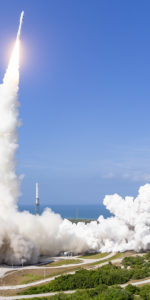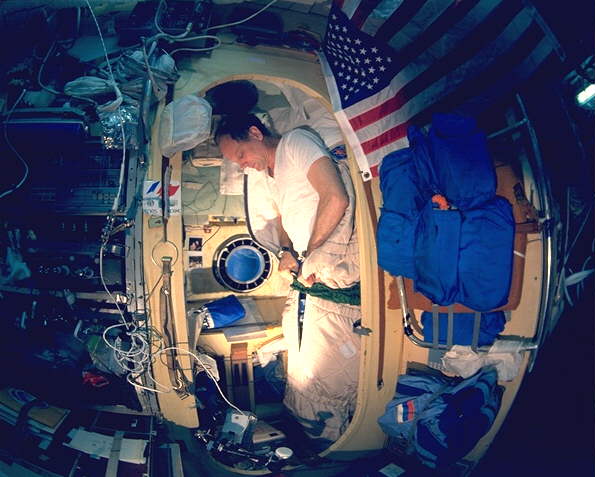
Twenty-five years ago, this month, the first U.S. astronaut in history was launched aboard a non-U.S. spacecraft, atop a non-U.S. rocket, from a non-U.S. nation, with a crew entirely composed of non-U.S. comrades. Four-time Space Shuttle flyer Dr. Norm Thagard had spent more than a year training for NASA’s first long-duration “increment” to the Russian Mir space station and in doing so would spend nearly four months—a total of 115 days—in orbit, soundly surpassing the previous U.S. endurance record set at the end of the final Skylab mission in early 1974.
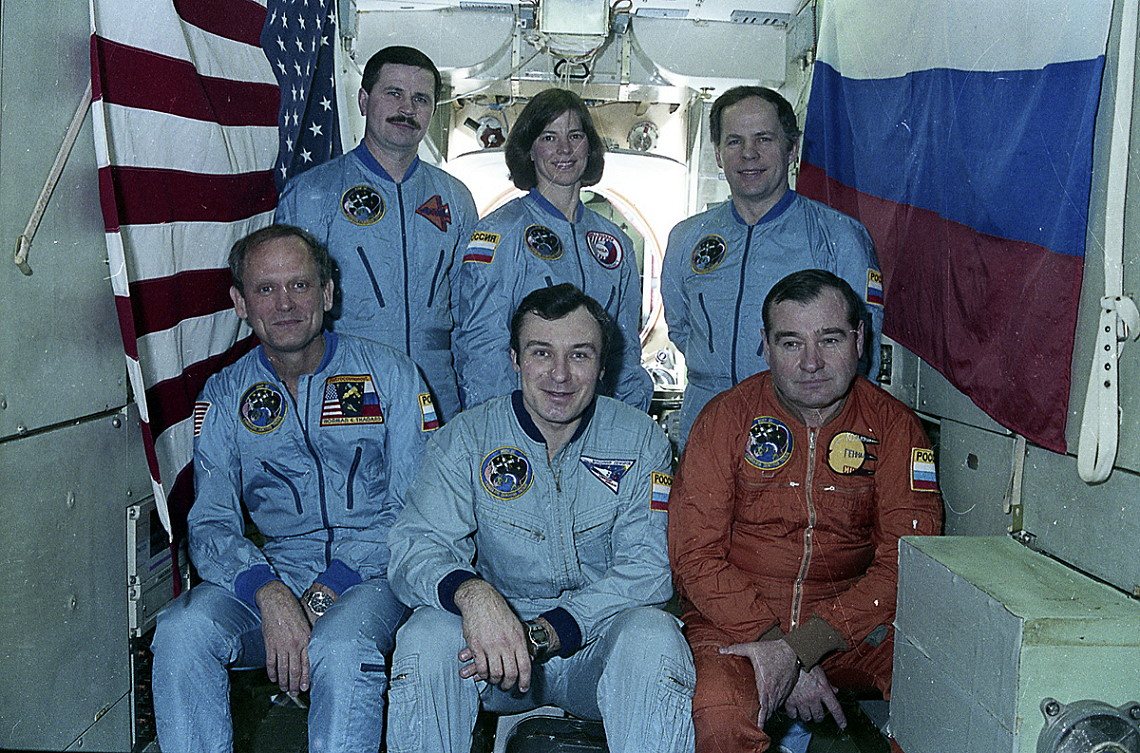
Thagard’s experience would lay the groundwork for dozens of his fellow Americans to embark on more ambitious space voyages, lasting far in excess of 100 days. Indeed, March 2020 also marks four years since Scott Kelly set a U.S. single-mission endurance record of 340 days in space and only last month Christina Koch returned from the International Space Station (ISS) after 328 days, the longest-ever spaceflight by a woman.
But Thagard’s mission to Mir did not prove entirely smooth-sailing and, as detailed last weekend by AmericaSpace, training in Russian systems, language and life in the shattered post-Soviet economy was challenging for himself, his backup Bonnie Dunbar and the NASA delegation dispatched to the Star City cosmonauts’ training center, on the forested outskirts of Moscow. A large pressurized module, Spektr (“Spectrum”), was planned to carry most of Thagard’s research equipment and would provide his living quarters aboard Mir, but the economic crisis and the October 1994 collapse of the ruble caused its launch to be delayed from February to May 1995, more than halfway through his three-month mission.
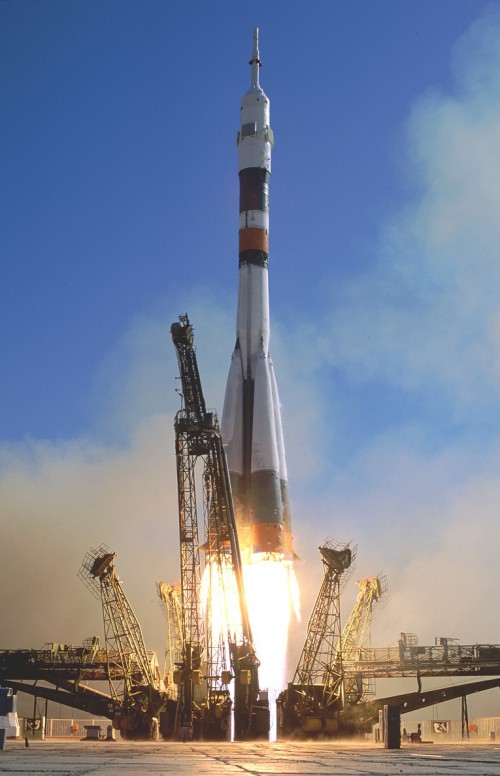
Early on 14 March, Thagard and his Russian crewmates—four-time veteran cosmonaut Gennadi Strekalov and “rookie” commander Vladimir Dezhurov—suited up at the Baikonur Cosmodrome in Kazakhstan, bade farewell to their loved ones and were bussed out to the launch pad and their waiting Soyuz TM-21 spacecraft. “It was below freezing,” said Thagard, “and there was quite a strong wind blowing and it was the only time in my life when I was actually glad I had a pressure suit on, because those things are usually hot and uncomfortable, especially if you start moving around in them. Yet it was just perfect for that day.”
Having launched previously from Florida, Thagard wondered if the cold weather would prompt a scrub, but Strekalov told him not to worry. “The colder the better” was his reply. Thagard next pointed out that gale-force winds were whipping across the desolate Kazakh steppe. Strekalov grinned. All would be fine, he said, “as long as it’s not a hurricane!” Ironically, “Hurricane”, or the Russian word Uragan, was Soyuz TM-21’s radio callsign.
Launch occurred at 9:11 a.m. Moscow Time and for Thagard there were similarities and differences compared to his previous shuttle ascents. On the one hand, the Soyuz carried little of the growling staccato crackle of the Solid Rocket Boosters (SRBs), but whereas the shuttle’s ride to space quietened down into a smooth “electric ride” during second-stage flight, on the Russian vehicle the noise and intense vibration remained acute. But when the Soyuz rocket cut off and orbital flight was attained, the instant was accompanied by something “very emphatic”, which Thagardlikened to a “clang”, quite distinct from the shuttle’s three main engines. “One possible explanation I’ve been told,” he said later, “is that the shuttle throttles back, so it’s at 65 percent when the main engines cut off, whereas the Soyuz third-stage engine is at full-bore when it cuts off.”
For the next two days, Thagard, Strekalov and Dezhurovwere confined to Soyuz TM-21’s cramped descent and orbital modules as they headed for Mir. They docked smoothly at the aft longitudinal port of the Kvant (“Quantum”) module on 16 March and Thagard compared the moment of impact as carrying the same minor punch as backing a car into a loading bay and hitting a set of rubberized cushions. After customary pressurization and leak checks, the hatches were opened and the newcomers were welcomed aboard Mir by the resident crew of Aleksandr Viktorenko, the first female long-duration flyer Yelena Kondakova and Valeri Polyakov, the latter of whom was coming to the end of a record-setting 14 months in space. In a traditional Russian welcome, Kondakova brought bread and salt.
And there was another record being set elsewhere in orbit, for shuttle Endeavour was coming to the end of a 16-day astronomy mission, the commander of which happened to be one of Thagard’s former crewmates. Steve Oswald had been the pilot on Thagard’s STS-42 flight in January 1992 and the pair were clearly delighted to share a unique ship-to-ship radio communications linkup.
“Dr. Thagard, I presume?” Oswald playfully quipped. “I was wondering how your English was by now, Normie, but it sounds like you haven’t forgotten a thing.”
“You know, I figured if we were ever in orbit again, we’d probably be on the same spacecraft,” replied Thagard, wistfully. “I guess I was wrong!”
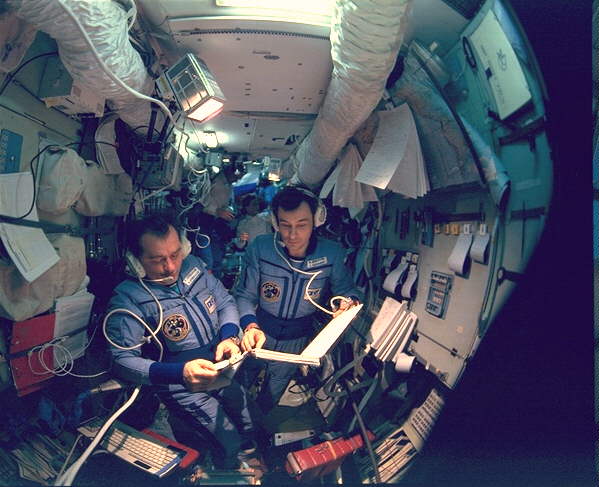
A week later, Viktorenko, Kondakova and Polyakov returned to Earth aboard their Soyuz TM-20 spacecraft, leaving Dezhurov, Strekalov and Thagard aboard the space station until the arrival of the first shuttle/Mir docking mission, then planned for launch late in May 1995. As circumstances transpired, the shuttle would be delayed until late June, and by the time Thagard and his Russian crewmates eventually returned to Earth on 7 July they would have accrued no fewer than 115 days in orbit. In doing so, Thagard exceeded the 84-day record of the final Skylab crew, and—when added to his 25 cumulative days from four previous shuttle flights—he became the most experienced U.S. astronaut in history, with a combined 140 days in space. It was a record that he would hold for almost a year, until fellow astronaut Shannon Lucid eclipsed his career total in 5 July 1996.
As the 20th century ended and the new millennium dawned, those records would fall like ninepins for the United States. Not only did Lucid surpass Thagard’s achievement, but by the time she returned to Earth after 188 days in September 1996 she had established a new single-mission endurance record for female spacefarers, which would endure for more than a decade, until June 2007, and would then be broken by SuniWilliams. This accomplishment would itself be exceeded by Peggy Whitson—later to serve as Chief of NASA’s Astronaut Office—who became the first woman to serve three long-duration space station tours, accumulating over 665 days in orbit by the time her third expedition ended in September 2017. At the time of writing, Whitson remains, by far, the most experienced woman spacefarer of all time, although last month she lost the record for the longest single female mission to Christina Koch.
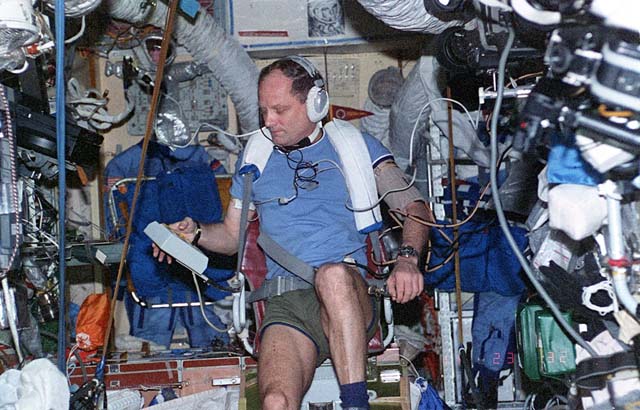
The records fell similarly quickly for the male U.S. astronauts, too, although in comparison with Russia’s highly seasoned corps of long-duration cosmonauts there are few Americans on the list of the Top Twenty most experienced spacefarers. At present, only Peggy Whitson and Jeff Williams—both veterans of three ISS tours apiece—sit within that hallowed list, each of whose members has accrued over 500 days in space.
In March 2016, Scott Kelly set a record for the longest single mission by a U.S. male astronaut at 340 days. At first glance, these enormous numbers seem to overshadow Thagard’s 115-day mission to Mir all those years ago. But it was his pioneering flight which paved to moving from a shuttle-centered focus of regular, short-duration missions to actually living and working in space for long periods. And that will surely pay dividends as America seeks to expand its human presence beyond Earth and outward into the cosmos.
.
.
FOLLOW AmericaSpace on Facebook and Twitter!
.




